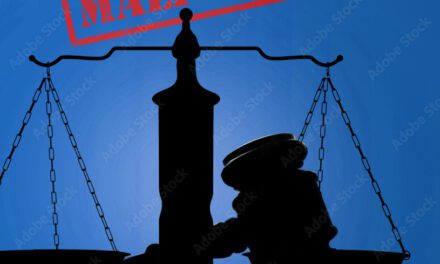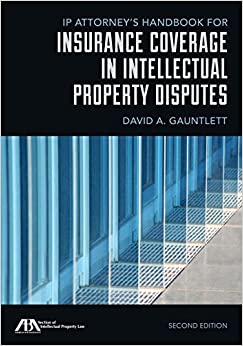THE SINKING OF THE LUSITANIA AND INSURANCE*–
*There will be little out-and-out said in this essay about insurance. It lurks behind everything, however. This blog is about a judicial decision regarding negligence on the part of the owner of the ship–the Cunard Line–and its employees. If the relevant war risk insurance covering the vessel contained a liability part, then that insurer may have hired the lawyers representing Cunard Line. Obviously, the issues of this case are a potential foundation of liability insurer liability. Part I is found in Quinn’s Commentaries on Insurance Law and is dated March 11, 2015. Part II pertains to the judicial inquiry which took place in England almost immediately after the sinking. It is to be found in Quinn’s Commentaries on Lawyers and Lawyering. “Lusitania Catastrophe-Part II: Wreck Commission,” Blog Date April 30, 2015. A version of this blog will also occur in Quinn’s Commentaries on Insurance Law.
Lusitania Torpedo Catastrophe:
Cunard Limits Liability: Federal Litigation
Part III
Michael Sean Quinn
(See below for more information.)
Some Quick Background
What would now be called personal injury litigation was initiated in the United States almost immediately after the ship was sunk, no doubt because at least most of the plaintiff’s were family members or beneficiaries under the estates of Americans killed in the attack.
Nowadays, of course, most personal injury cases, including wrongful death cases are litigated individually or as class actions. Admirality situations may be a bit different sometimes. There were no class actions in 1915; they didn’t exist as litigation entities yet, and there weren’t going to be any for a long time. Consequently, there were many actions filed, almost certainly, all of them against the owner of the vessel and maybe a travel agent or two, since Germany had taken out an ad in some newspapers, in effect, warning people of the dangers of getting on any cruise vessel going to Great Britain.
Today, the chances are that liability carriers would be involved to some degree in defending a target defendant, assuming it is insured. So, did Canard Steam Ship, Ltd, the owner of the Lusitania, have an insurer with a duty to defend? It had war risk insurance that covered the ship itself plus its cargo, and with an exposure that large, undoubtedly, there was reinsurance and hence probably reinsurers. But I don’t know whether the war risk property insurance policy also had a liability section.
Probably Canard’s insurance would not include life insurance for passengers, or workers comp insurance for crew members. (When I was a kid—really a kid, 10± years—I remember in airports there used to be then technologically sophisticated vending machines out of which one could buy life insurance for traveling. I have been told that in years before that, i.e., before 1955, there were travel agencies with tiny offices in travel depots of various sorts—rail, ship, air—selling life and accident insurance for trips. (Nowadays, travel insurance is big business; it not for mere Orlando to Kansas City travelers, and his has a whole array of coverage. Maybe one of these days, I’ll write a bit about it. Would you believe this? One can get it from a Lithuanian insurance company? Oh dear! That’s a Baltic country and has nothing to do with the Lusitania, a steam ship.)
In any case, in cases like this one–as of now, for over 150 years–the owner of a ship could limit its exposure to damages in death cases, among others, to the value of the ship itself and the cargo it carried post loss, so long as the loss occurred without the owner’s “privily or knowledge.” That rule resulted from the Shipowner’s Limitation of Liability Act of 1851, and it was enforce in 1915, just as it is (pretty much) now. (The owner was also required to put up a security amount, but it is unclear how this would work when the value of the vessel post loss was $0.00.)
What the meaning of the word “privity” means in a context like this one is not entirely clear to me, but “knowledge” includes, for the most part, the idea, that if the owner knew about acts of negligence or knew that they were probably or reasonably should have know this, then it was not entitled to the limitation to be found in the statute. The “knowledge” of the master of a vessel was to be counted as knowledge of the owner.
For decade upon decade upon decade insurance underwriters have tried to limit–and usually have limited–their liability under their policies to that which falls within the limitation under the act.
In this case, Cunard sought to invoke this right by filing a petition, what is now called a complaint-in-limitation in a federal district court. The judgment of the court might include two dimensions. The first one was whether the ship owner might be liable, for example, as the result of the fact that the ship was not seaworthy, and the owner had not been appropriately diligent in making sure that it was and/or as a result of the negligence of the ship’s crew about which the owner did or should have known.
Obviously, if a court finds no liability, it would not take up any matter of how much money is to be awarded, that is, it would never reach the second dimension. As we shall see, this case was designed to try and set the exposure of the ship owner and its liability insurer, if any, at zero. A finding of no liability would do this.
What the meaning of the word “privity” means in a context like this one is not entirely clear to me, but “knowledge” includes, for the most part, the idea, that if the owner knew about acts of negligence or knew that they were probably or reasonably should have know this, then it was not entitled to the limitation to be found in the statute. The “knowledge” of the master of a vessel was to be counted as knowledge of the owner.
For decade upon decade upon decade insurance underwriters have tried to limit–and usually have limited–their liability under their policies to that which falls within the limitation under the act.
In this case, Cunard sought to invoke this right by filing a petition, what is now called a complaint-in-limitation in a federal district court. The judgment of the court might include two dimensions. The first one was whether the ship owner might be liable, for example, as the result of the fact that the ship was not seaworthy, and the owner had not been appropriately diligent in making sure that it was and/or as a result of the negligence of the ship’s crew about which the owner did or should have known.
Obviously, if a court finds no liability, it would not take up any matter of how much money is to be awarded, that is, it would never reach the second dimension. As we shall see, this case was designed to try and set the exposure of the ship owner and its liability insurer, if any, at zero. A finding of no liability would do this.
Historical Context of Case
The case to be discussed in Petition of Cunard S.S. Co., Limited, 151 F. 715 (S.D.N.Y. August 23, 1918) The abbreviations stand for “Federal” in the case of the “F,” and the Southern District of New York in the case of “S.D.N.Y.” For many years now, the “F,” just by itself, refers to federal circuit courts, that it federal mid-level courts—courts above district courts but below the Supreme Court of the United States. In 1918, as today, New York is in the Second Circuit. For many years, and now, federal district are referred to by the designation “___F.Supp.3d ___ ( M.D.C.* [Middle District of Con.,*] 20XX),” where the first blank is filled in by an edition number and the second is the first page. (If there is a quote, there is a third number.) In today’s citation lingo the cite in this case would read 151 F.Supp. 714 (S.D.N.Y. 1918) *There is no such district court; the citation is for illustration purposes only.
Judge Julius Marshuetz Mayer heard the case, and the petitioner was represented by Lord, Day & Lord, then and for many years thereafter a distinguished, elite, so-called “white-shoe” law firm. (It went defunct in 1994, an early casualty of the explicit commercialization of large, prestigious, “BigLaw” law firms.)
Little is remembered today regarding Judge Mayer but he spent a good deal of his adult life in public services related involving the law. There is no memoir, no biography, no anything of the sort. A Cardozo or a Hand, he was not, although he was succeeded by the later on the Second Circuit.
He was a judge in the state system for a while; he was New York AG for a couple of years until he lost his re-election bid. In 1912 President Taft appointed him district judge in the S.D.N.Y., where he served from 1912 to 1921, whereupon President Harding appointed him to the Second Circuit Court of Appeals, where he remained for three years. It would be interesting to know if he was among the first Jewish appointments to the federal bench. (One thing for sure, since Judge Mayer went to college at C.C.N.Y, he could never have spend any of his years in private practice at Lord, Day, Lord, or any firm like it, even if he had gone to Columbia Law School, which he did. A brief discussion of another case in which Lord, Day, Lord represeted Cunard is tacked on at the end of Part I.)
The Case Itself
His opinion is well done, though not elegant, aside from the fact of the powerful language evaluating the act of the German government (“inexpressibly cowardly attack”), an assertion which was surely justified, though perhaps inappropriate in a court opinion. In detail Judge Mayer (i) describe(d) the ship so well that one is tempted to think he was a sea faring fellow himself, (ii) described what happen to the ship after it was torpedoed, (iii) spelled out the evidence for the propositions that the ship was sea worthy, (iv) argued that Captain Turner did a sound job, even if he was using a “four-point [and not a two-point] bearing” or might not have been going quite fast enough, etc. (v) discussed why the life boats (including the collapsible boats) could not have been handled safely in a manner different from how they were, and so forth.
In judging Capt. Turner’s performance, Judge Mayer quotes Lord Mersey, the judge in the Wreck Commission proceeding,[2] at length[3]:
Capt Turner was fully advised as to the means which, in the view of the Admiralty, were best calculated to avert the perils he was likely to encounter, and in considering the best question whether he is to blame for the catastrophe in which his voyage ended I have to bear this consideration in mind. It is certain that in some respects[4] Capt. Turner did not follow the advice[5] given to him. It may be (though I seriously doubt it) that, had he done so, his ship would have reached Liverpool in safety. But the question remains: Was his conduct the conduct of a negligent or of an incompetent man? On this question I have sought the guidance of my assessors, who have rendered me invaluable assistance, and the conclusion at which I have arrived is that blame ought not to be imputed to the captain. The advice given to him, although meant for his most serious and careful consideration was not intended to deprive him of the right to exercise his skilled judgment in the difficult questions that might arise from time to time in the navigation of his ship. His omission to follow the advice in all respects cannot fairly be attributed either to negligence of incompetence. He exercised his judgment for the best. It was the judgment of a skilled and experienced man, and although others might have acted differently, and perhaps more successfully, he ought not, in my opinion, to be blamed.
In quoting Lord Mersey’s opinion , Judge Mayer did not seem to recognize that Lord Mersey may have had several pressures on him: government, popular opinion, the law, Lloyds, and maybe others. This is minor ballast, however. It is a very good thing, however, that Judge Mayer, like Lord Mersey recognized explicitly that not following “advice,” (or “recommendations”” is not necessarily negligent or even ill-advised. Here is how Judge Mayer elaborated upon Lord Mersey’s opinion:
[T]he captain could not shield himself automatically against error behind a literal compliance with the general advices or instructions of the Admiralty’ nor can it be supposed that the Admiralty, any more than the petitioner, expected him so to do. What was required of him was that he should seriously consider, and as far as practicable follow the Admiralty advices, and use his best judgment as events and exigencies occurred; and it a situation arose where he believed that a curse should be pursued to meet emergencies which required departure from some of the Admiralty advices as to a general rule of action, then it was his duty to take such course, if in accordance with his carefully formed deliberate judgment.
The observations lead to the following wisdom, as important today as it was in 1918:
After a disaster has occurred, it is not difficult for the expert to show how it might have been avoided, and there is always opportunity for academic discussion as to what ought or ought not to have been done; but the true approach is to endeavor, for the moment, to possess the mind of him upon whom rested the authority.
Judge Mayer even referred to the behavior of the passengers upon having been torpedoed:
The conduct of the passengers constitutes an enduring record of calm heroism, with many individual instances of sacrifice, and in general, a marked consideration for women and children. There was no panic; but, naturally, there was a considerable amount of excitement and rush, and much confusion and, as the increasing list rendered ineffective the lowering of the boats on the port side, the passengers, as is readily understandable, crowed over on the starboard side.
As a purely semantic matter, I wonder how one could draw a line between the kind of excitement and rushing Judge Mayer described and panic. Where is that distinction to be found? Along what line? I also wonder, from a strictly historical and sociological point of view if the ancient rule “women and children first” would hold today as to women.
Judge Mayer made a number of interesting points about Captain Turner other than simply holding that neither he nor Cunard had been negligent. In addition, in dicta Judge Mayer observed that even if he/it were there could be no proximate cause given the German attack. (“The Lusitania was as helpless in that regard as a peaceful citizen suddenly set upon by murderous assailants.”) Moreover, even if they were negligence and made a significant contribution to causation the established rule of common law tort is (or was then) that “even if negligence is shown, it cannot be the proximate cause of a loss or damage, if an independent illegal act of a third party intervenes to cause the loss.”
Judge Mayer also–citing Thomas Jefferson, scholars of various countries and a number of cases–observed at some length that established international law is the law of the United States of America, and when the Lusitania was sunk the international law forbad doing exactly what Germany did. It thereby violated “a cherished and humane rule observed, until this war, by even the bitterest antagonists.” Consequently, Germany must bear both legal and moral blame.
Upon these grounds, and others, Judge Mayer conjectured that when it came time to figure out reparations, the government of the United States would insist that there be damage awards for its citizens coming from the German government. And this indeed is exactly what happened.
And more. Some insurance companies also received damage awards from the reparation “court.” But that is a different story, for a different part.
Michael Sean Quinn, Ph.D., J.D., c.p.c.u. . . .
The Law Firm of Michael Sean Quinn et
Quinn and Quinn
1300 West Lynn Street, Suite 208
Austin, Texas 78703
(512) 296-2594
(512) 344-9466 – Fax
[1] Harold James, et al, THE VALUE OF RISK: SWISS RE AND THE HISTORY OF REINSURANCE 71-72 (Oxford Univ. Pr. 2013)
[2] Quinn’s Commentaries on Lawyers and Lawyering, “Lusitania Catastrophe–Part II,”Wreck Commission 1915” April 30, 2015.
[3] There are several footnotes inserted. They are mine, not those of those of either court.
[4] The phrase “in some respects,” without any further explanation, is a nice way to avoid black-versus-white, up-down confrontations.
[5] Notice that this is “advice” and not “direction,” directive,” “command,” “rule” or anything like that.







Recent Comments